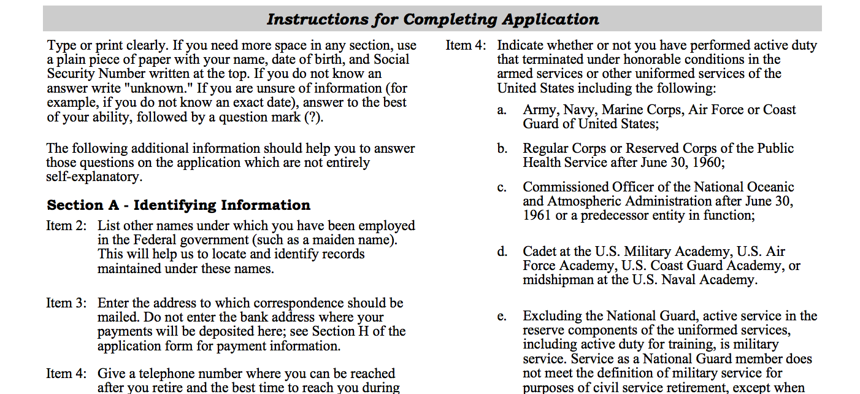Last-Minute Retirement Tips
Some things to think about before filling out your paperwork.
Since January 2016, nearly 100,000 federal employees have retired. Many more will likely be added to the retirement rolls soon, because the Office of Personnel Management typically receives twice as many retirement applications in January than at any at any other time of the year.
Making the application process go smoothly requires cooperation between the retiring employee, his or her agency and the Office of Personnel Management. Federal personnel offices have been busy for the past few months helping employees prepare for this milestone by providing individual retirement counseling and compiling the package of paperwork that must be mailed to OPM in order for the process to begin.
Yes, I did say paperwork. It’s almost 2017, but retirement processing is still a mostly paper affair. In fact, OPM’s instructions on filing forms include the following pieces of advice: “Punch holes with 2-hole punch on the right side of all landscape papers; on the top of all portrait papers,” and “Any partial pieces of paper or small papers should be stapled to a blank full sheet of paper.”
One of OPM’s goals is to eliminate the backlog of retirement claims to be processed and ultimately, to process 90 percent of all new claims within 60 days. As of the end of November, there were more than 16,000 claims awaiting processing, with 61 percent of them getting processed in 60 days or less. But you can expect a surge in claims arriving at OPM over the next couple of months.
Incomplete or inaccurate information from agencies can significantly delay processing and ultimately, a retiree's first benefit check. Unfortunately, 23 percent of all claims OPM receives are missing one or more records and 11 percent are not received during the first 30 days following the retirement of the federal employee.
Following are a few tips that can you avoid falling into one of these categories. First, here are the basic forms:
The retirement application must be a complete, original form, signed by the applicant, in ink and dated. Photocopies of retirement applications may be accepted if all of the criteria set by OPM are met. All questions must be answered, all applicable boxes checked and all areas requiring initials must be initialed.
Areas that are frequently overlooked include:
- The marriage question and the court order question in Section E of the SF 2801 or Section C of the SF 3107. They must be answered by every applicant, regardless of marital status.
- If you are married, you need to provide a copy of your marriage certificate.
- The survivor election in Section F of the SF 2801 or Section D of the SF 3107 must be indicated, regardless of whether the individual is married or not.
- Married applicants should choose their desired survivor election, even if there is a court-ordered former spouse survivor benefit. This will ensure that their current spouse will receive the survivor benefit if the former spouse loses entitlement due to death or remarriage prior to age 55.
- When a married applicant elects less than full survivor benefits, a spousal consent form (SF 2801-2 or SF 3107-2) must be submitted. The survivor election on the spousal consent must match the annuitant’s election in Section F of the SF 2801 or Section D of the SF 3107. The election must be notarized by a notary public.
An agency retirement specialist prepares the Certified Summary of Service form (SF 2801-1 or SF 3107-1), which the retiring employee then signs. Before you do so, be sure that:
- All periods of creditable civilian and military service are listed.
- Part-time tours of duty and/or hours worked, intermittent time time worked and any excess leave without pay are documented.
- For military service, the character of service, lost time (if any) and disposition of post-1956 military service deposit in “Remarks and non-creditable time” are included.
- For all periods of creditable non-covered service (employment that was not subject to CSRS or FERS retirement deductions, such as temporary or seasonal employment), the appointment date, pay rate, all pay changes, effective dates and separation date are listed on the back side of the form.
The responsibility for a painless and timely move from employee to annuitant begins with your planning and preparation. Try to turn your retirement application in at least 30 to 90 days prior to your retirement date to allow your agency the time it needs to compile the necessary records and documentation to send to OPM. Be sure you understand issues such as survivor benefits, insurance coverage and the current and future value of your retirement benefit.
For those who have retired in 2016, I wish you a long and healthy life after retirement and thank you for your dedication to your federal career. I hope that in some way this column has helped you prepare for a smooth transition.








